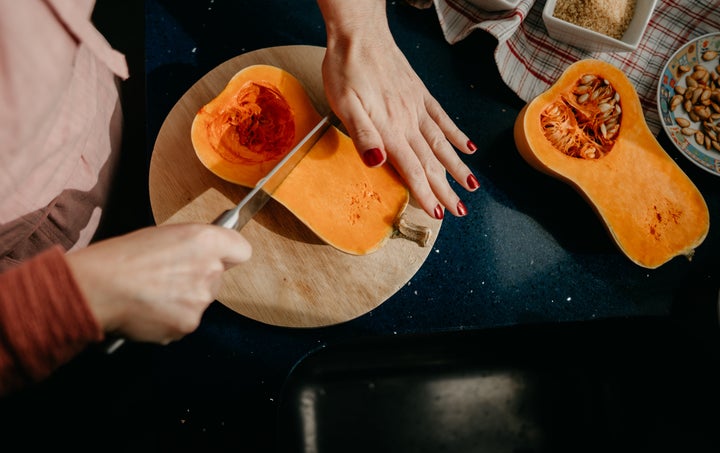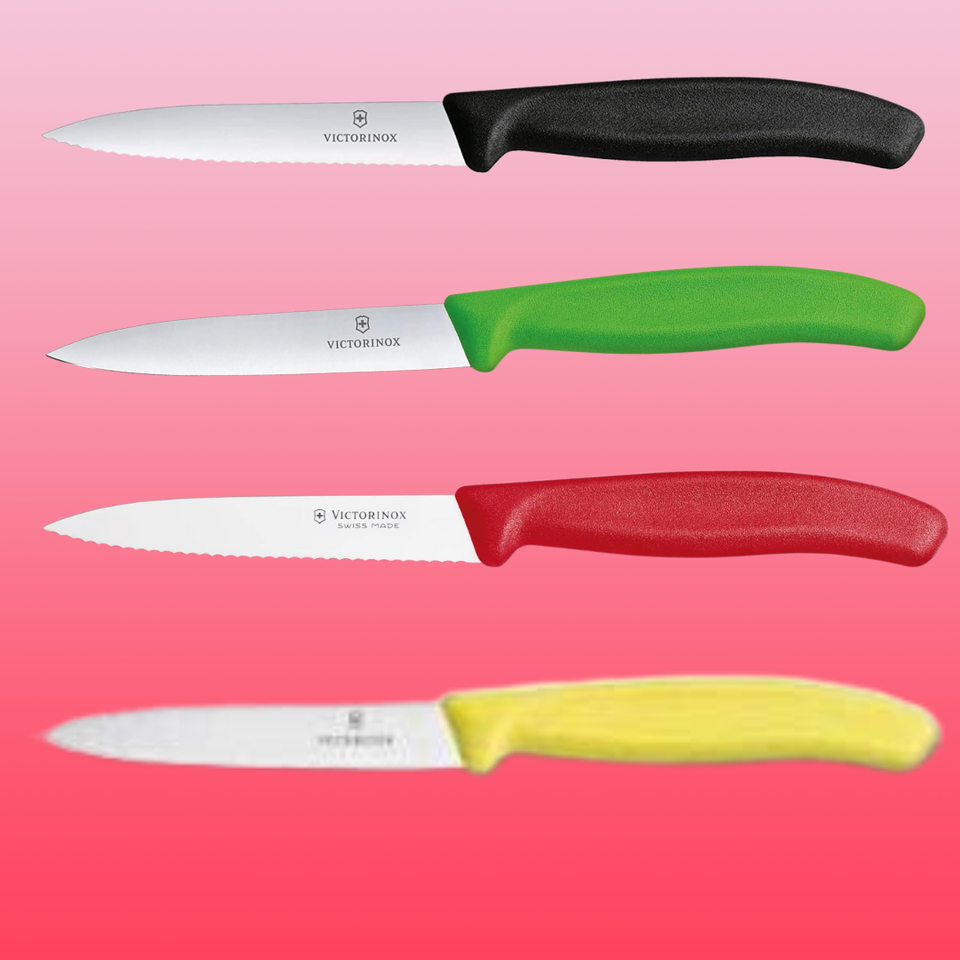
If you’ve visited your local grocery store or farmers market lately, you’ve probably noticed something exciting. Squashes of every shape and size have started to trickle in, reminding us of all the roasting, sautéing and pureeing in the months ahead.
Personally, I love squash. I love an acorn squash, a butternut squash, a delicata squash. I love a squash-based soup, a perfectly roasted squash with flaky sea salt, and a handful of butternut squash cubes tossed on top of a salad. The only issue? I’m absolutely terrified of actually cutting anything larger than a delicata squash.
Because I’m sick of buying the pre-cubed squash, which is expensive, bad for the environment and frankly not as good, I decided to consult chefs to get their best tips for cutting squash without slicing off your fingers. Spoiler alert: the sharper the knife, the better.
Here’s everything you need to know about safely cutting squash, and how to wrangle your squash after that first cut.
Choose A Stable Surface And A Long, Sharp Knife
First things first: When trying to cut a large squash, your surface should be incredibly stable to prevent any slipping and sliding. “Cut on a clean, stable surface such as a kitchen countertop,” said Neil Bertucci, a chef and content producer at Ingredient. “Secure your cutting board to the surface with a damp paper towel or rubber mat to prevent it from moving while you are cutting.”
Now, it’s time to get to work — with a very long, very sharp knife. “Your knife should be incredibly sharp, and it’s smartest to use at least an 8-inch chef’s knife,” said Billy Parisi, a chef with over 15 years in the restaurant industry.
If you’re not sure how long your knife is and don’t feel like getting out a measuring tape, Bertucci suggests making sure your very sharp knife is longer than the squash is wide. This will make it easier to both cut the squash in half and avoid getting your knife stuck in the squash and having to wiggle it out.
As for how to know if your knife is sharp enough, Bertucci uses the “paper test.” “Hold the top of a piece of printer paper firmly by the edge, place the blade of your knife perpendicular to the edge of the paper, and slice downward through the paper. A properly sharp knife will slice the paper effortlessly, without tearing,” he said.
Start Cutting (Very Carefully, Of Course)
Now, for the fun part: Parisi says to start the squash-cutting process by laying the squash on its side and raising your knife 3-4 inches above the squash. Then, give it a little chop to break into it. “Using your other hand (the one not holding the knife), press down on the top of the blade and slice all the way through,” he said. “You need to be able to flatten the squash before cutting it so that it’s stable and not rocking back and forth.”
For safety purposes, Bertucci also recommends cutting your squash with intention, focus and enough force. “When cutting squash, hold the knife handle firmly and close to the blade to help increase force. Firmly grasp the squash with your non-dominant hand to stabilize it. When you cut, press down firmly with both hands.”

After you’ve got your squash in half, it will likely feel easier to peel it (if that’s your plan, of course). If the skin feels too tough to peel, puncture it a few times with a fork and microwave the squash for about three minutes to tenderize the skin. You can let it cool until it’s safe to handle, then continue to peel. “Acorn squash in particular is difficult to peel before cooking,” Bertucci said. “After slicing it in half and removing the seeds, cut it into wedges defined by the ribs of the squash. After roasting, you can easily cut the skin off with a paring knife.”
Another tip Bertucci recommends is slicing a thin piece off the top and bottom ends of the squash. “This allows the squash to sit flat on the cutting board, so it will not roll around while you make future cuts,” he said. In fact, you should always place the flat side of the squash down on the cutting board before making any cuts.
Once your squash is officially sliced open, it’s time to scrape out the seeds inside of it. ”Use a spoon to scrape out the seeds. Now, cutting the squash into smaller pieces will be easier,” Bertucci said. “Place the squash cut-side down, and slice it into half moons, dice it, or rub it in extra-virgin olive oil, salt, and black pepper and roast the two halves. They’ll be even easier to cut once cooked!”
A Few Additional Tips To Keep In Mind
The first cut is the deepest, as they say, and once you’ve safely sliced your squash in half, you’ve won the first battle. But there are a few extra tips to keep in mind, according to Bertucci. “If you’re cutting a butternut squash, when it’s still on its side, firmly grip the neck of the squash and make a third slice right above the bulb,” he said. “Separating the two distinct shapes will make it easier to maneuver your knife when peeling [which is best done after slicing the squash in half] and making future cuts.”
It’s hard to believe that slicing into a giant squash will ever not be scary, but with these chef-approved tips, we can all feel a little more confident as we head into peak squash season.
